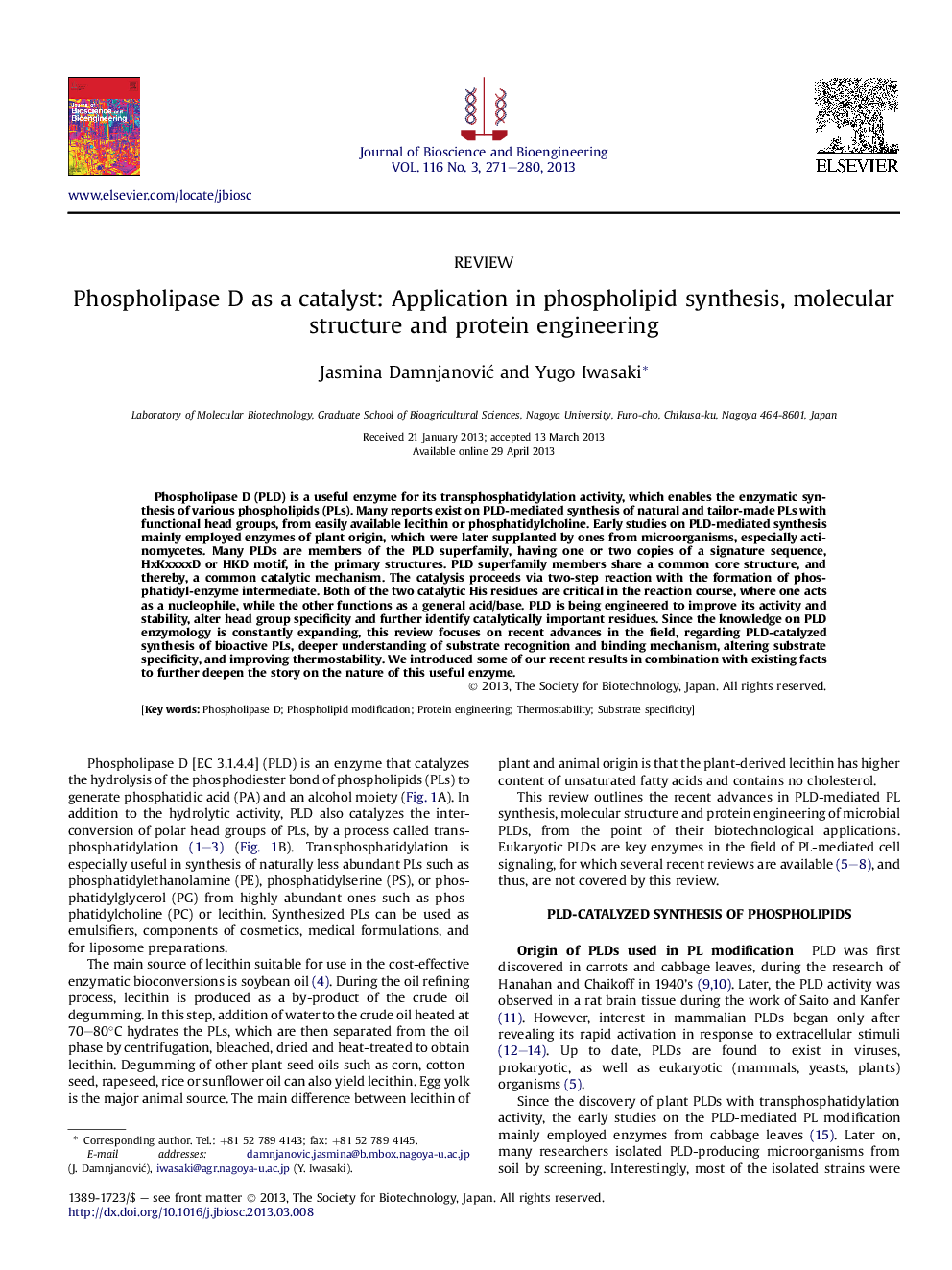| Article ID | Journal | Published Year | Pages | File Type |
|---|---|---|---|---|
| 20755 | Journal of Bioscience and Bioengineering | 2013 | 10 Pages |
Phospholipase D (PLD) is a useful enzyme for its transphosphatidylation activity, which enables the enzymatic synthesis of various phospholipids (PLs). Many reports exist on PLD-mediated synthesis of natural and tailor-made PLs with functional head groups, from easily available lecithin or phosphatidylcholine. Early studies on PLD-mediated synthesis mainly employed enzymes of plant origin, which were later supplanted by ones from microorganisms, especially actinomycetes. Many PLDs are members of the PLD superfamily, having one or two copies of a signature sequence, HxKxxxxD or HKD motif, in the primary structures. PLD superfamily members share a common core structure, and thereby, a common catalytic mechanism. The catalysis proceeds via two-step reaction with the formation of phosphatidyl-enzyme intermediate. Both of the two catalytic His residues are critical in the reaction course, where one acts as a nucleophile, while the other functions as a general acid/base. PLD is being engineered to improve its activity and stability, alter head group specificity and further identify catalytically important residues. Since the knowledge on PLD enzymology is constantly expanding, this review focuses on recent advances in the field, regarding PLD-catalyzed synthesis of bioactive PLs, deeper understanding of substrate recognition and binding mechanism, altering substrate specificity, and improving thermostability. We introduced some of our recent results in combination with existing facts to further deepen the story on the nature of this useful enzyme.
